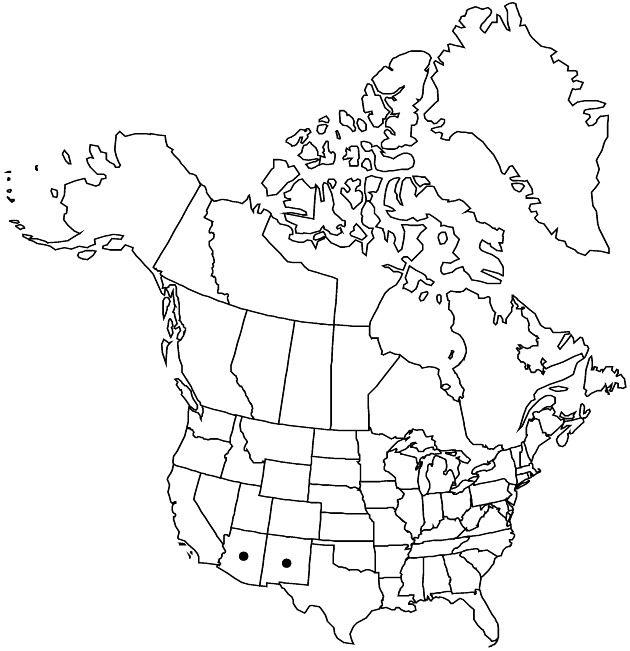Difference between revisions of "Bahia biternata"
Smithsonian Contr. Knowl. 5(6): 95. 1853.
FNA>Volume Importer |
FNA>Volume Importer |
||
| Line 46: | Line 46: | ||
|publication year=1853 | |publication year=1853 | ||
|special status= | |special status= | ||
| − | |source xml=https://jpend@bitbucket.org/aafc-mbb/fna-data-curation.git/src/ | + | |source xml=https://jpend@bitbucket.org/aafc-mbb/fna-data-curation.git/src/8f726806613d60c220dc4493de13607dd3150896/coarse_grained_fna_xml/V19-20-21/V21_965.xml |
|tribe=Asteraceae tribe Heliantheae | |tribe=Asteraceae tribe Heliantheae | ||
|subtribe=Asteraceae (tribe Heliantheae) subtribe Chaenactidinae | |subtribe=Asteraceae (tribe Heliantheae) subtribe Chaenactidinae | ||
Revision as of 16:38, 18 September 2019
Annuals, 8–40+ cm. Stems mostly erect. Leaves all or mostly alternate (proximal sometimes opposite); blades simple or 1–2-ternately lobed, lobes filiform to linear, 5–12(–25+) × 0.5–1.5(–3+) mm, faces sparsely scabrellous, usually gland-dotted as well. Involucres 3–4+ × 6–9+ mm. Ray florets 8–13+; corolla laminae 3–4(–10+) mm. Disc florets 30–60+; corollas 2.5–3.5 mm. Cypselae 2–3+ mm, faces ± hirtellous; pappi of (outer cypselae) ± ovate to quadrate, apically ± muticous scales 0.5–1 mm or (innermost cypselae) lanceolate to lance-subulate, apically ± aristate scales 1–2.5 mm.
Phenology: Flowering (May–)Sep–Oct.
Habitat: Granite outcrops
Elevation: 1200–1600 m
Discussion
Selected References
None.
Lower Taxa
None.
